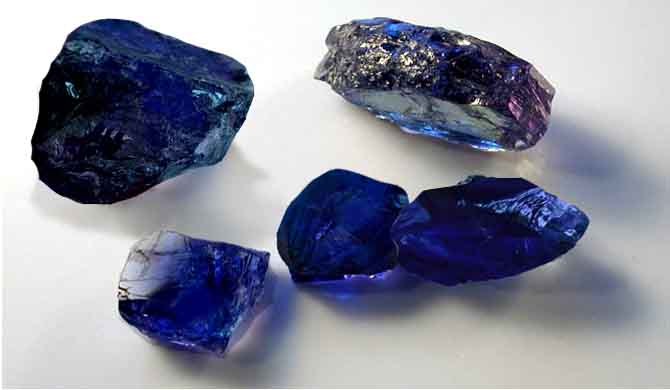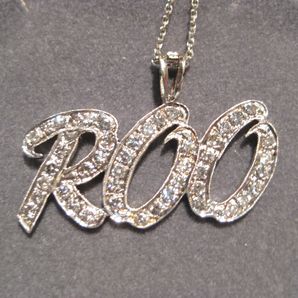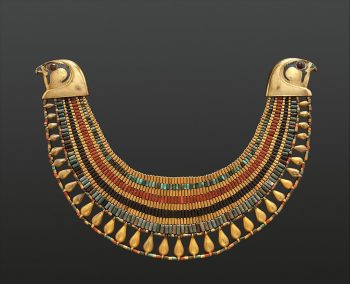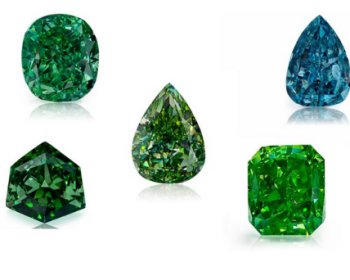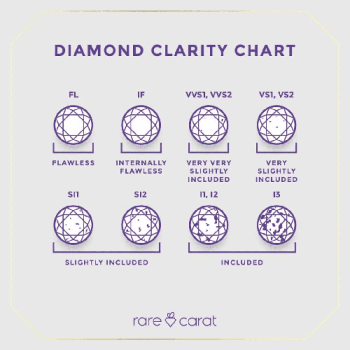December Birthstone Jewelry generally contains blue gemstones. Blue topaz, blue zircon, and tanzanite are all considered acceptable gemstones for December Birthstone Jewelry. However we go with tanzanite. Topaz is already the november birthstone and zircon is too soft, especially for rings. Plus, tanzanite is a stunning stone. With it’s pleochroic purple violet and blue colors, it is one of our favorites. It was kinda pricey for awhile in the 80s and 90s when it was all the rage. However, prices have dropped as the mania has worn off. Now, you can find tanzanites that look like sapphires for a fraction of the price. But we will get to that. First, we will discuss the gemstone itself.
What Is A Tanzanite?
Tanzanite is a rare and exquisite gemstone renowned for its vibrant blue-violet color, which is truly captivating. Tanzanite is a variety of the mineral zoisite and is only found in a small area near Mount Kilimanjaro. This gemstone has gained popularity in recent years for December Birthstone Jewelry due to its unique beauty and limited availability.
One of the most remarkable characteristics of tanzanite is its pleochroism, which means it can display different colors when viewed from different angles. In natural light, tanzanite appears blue, but under incandescent light, it can exhibit a purplish hue. This color-changing property adds to its allure and makes it a favorite among gemstone enthusiasts.
Tanzanite is also known for its exceptional clarity and brilliance. It is often cut into various shapes, such as oval, round, and cushion, to enhance its beauty. Additionally, tanzanite is relatively soft compared to other gemstones, which makes it susceptible to scratches and abrasions. Therefore, it is important to handle December Birthstone Jewelry with care and avoid exposing it to harsh chemicals or extreme temperatures.
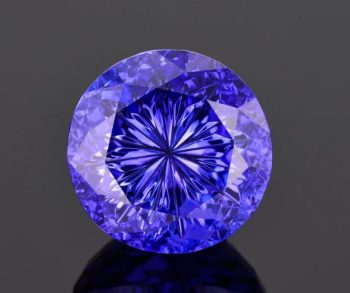
History Of Tanzanite
Tanzanite is a gemstone that holds a fascinating history. Discovered in the late 1960s, this rare gem is found only in Tanzania, hence its name. It was first identified by a local Maasai tribesman and later brought to the attention of a prospector named Manuel d’Souza. Since then, Tanzanite has gained popularity for its stunning blue-violet color and unique properties. Today, it is highly sought after by collectors and jewelry enthusiasts around the world.
The geological formation of Tanzanite is also quite remarkable. It is formed through a process called metamorphism, where intense heat and pressure transform existing minerals. In the case of Tanzanite, the transformation occurred within the foothills of Mount Kilimanjaro. This geological phenomenon is believed to have taken place over 585 million years ago, making Tanzanite an ancient gemstone with a rich history.
Tanzanite’s journey from discovery to international fame has been a remarkable one. In 2002, it was designated as the birthstone for the month of December by the American Gem Trade Association. This recognition further elevated its status and increased its popularity among consumers. Today, Tanzanite is not only cherished for its beauty in December Birthstone Jewelry, but also valued for its rarity and exclusivity. Its history is a testament to the enduring allure of gemstones and the wonders of nature.

Tanzanite Range of Colors
The Tanzanite range of colors encompasses a stunning variety that appeals to jewelry enthusiasts worldwide. This precious gemstone is renowned for its mesmerizing blue-violet hues. From deep indigo to vibrant lavender, the Tanzanite color spectrum offers a captivating array of shades. Whether you prefer a rich royal blue or a delicate pastel purple, there is a Tanzanite color to suit every taste and style.
The primary factor influencing the Tanzanite range of colors is the presence of trace elements within the gemstone. These trace elements, such as vanadium and chromium, interact with the crystal structure of Tanzanite to create its unique color variations. The intensity of these colors can vary depending on the concentration of these elements. For example, a higher concentration of vanadium results in a deeper blue color, while a higher concentration of chromium produces a more vibrant violet hue.
In addition to the traditional blue-violet colors, Tanzanite can also exhibit secondary hues, including greenish-blue and purplish-blue. These secondary hues add depth and complexity to the gemstone’s overall appearance. The presence of these secondary colors can be influenced by factors such as lighting conditions and the angle from which the gemstone is viewed. As a result, Tanzanite can display a remarkable play of colors that can change depending on the environment in which it is observed.
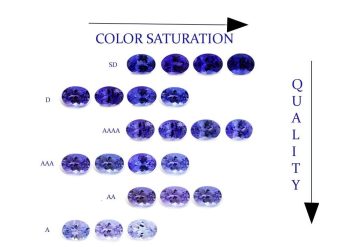
Tanzanite Physical Properties
Tanzanite is a variety of the mineral zoisite and is found exclusively in Tanzania. It has a hardness of 6.5 to 7 on the Mohs scale, making it suitable for everyday wear. However, it is still on the softer side. It has a refractive index of 1.69 to 1.70 and a specific gravity of 3.35 to 3.55.
In terms of its physical properties, tanzanite is pleochroic, meaning it can exhibit different colors when viewed from different angles. It typically appears blue under daylight or fluorescent lighting, but can show a purplish hue under incandescent light. This unique color-changing property adds to its allure.
Tanzanite is also known for its strong trichroism, meaning it can display three different colors when viewed from different directions. It can appear blue, violet, or burgundy, depending on the angle of observation. This optical phenomenon makes each tanzanite gemstone truly unique and captivating. No wonder it is our choose for December Birthstone Jewelry.
Natural vs Lab Grown Tanzanite
Natural tanzanite is formed deep within the earth over millions of years. It is a product of natural geological processes, making it unique and precious. Natural tanzanite is often more expensive due to its limited supply and the effort required to mine and extract it. It is also considered a symbol of luxury and exclusivity.
On the other hand, lab grown tanzanite is created in a controlled environment using advanced technology. It has the same chemical composition and physical properties as natural tanzanite, but it is produced in a fraction of the time. Lab grown tanzanite offers a more affordable alternative without compromising on quality or beauty.
Both natural and lab grown tanzanite have their own merits. Natural tanzanite appeals to those who appreciate the rarity and history behind gemstones, while lab grown tanzanite provides a more accessible option for those on a budget. Ultimately, the choice between natural and lab grown tanzanite depends on personal preferences and priorities.
Beliefs About Tanzanite
Tanzanite is believed to have metaphysical properties that promote spiritual growth and transformation. Many people also associate Tanzanite with feelings of calmness, clarity, and balance. It is often used as a birthstone for the month of December and is considered a symbol of new beginnings. Overall, Tanzanite is a cherished gemstone with a rich history and a variety of beliefs associated with it.
Why Tanzanite Jewelry Is In Fashion
December Birthstone Jewelry is currently in fashion for several reasons. Firstly, tanzanite is a unique gemstone that offers a stunning blue-violet hue, making it a captivating choice for jewelry. Its vibrant color adds a touch of elegance and sophistication to any outfit. Additionally, tanzanite is relatively rare, as it can only be found in a small area in Tanzania. This exclusivity adds to its allure and makes it a desirable gemstone for collectors and jewelry enthusiasts alike. Lastly, tanzanite is known for its versatility, as it can be easily incorporated into various jewelry designs, from delicate necklaces to statement rings. Its versatility allows individuals to express their personal style and create unique, eye-catching looks. In conclusion, the combination of tanzanite’s captivating color, rarity, and versatility has contributed to its popularity in the world of fashion jewelry.
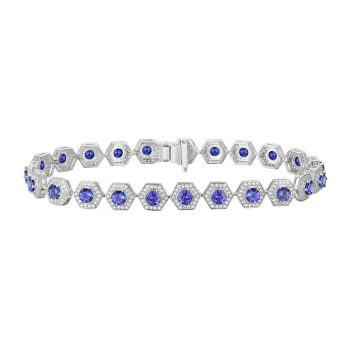
Famous Tanzanite Specimens
One of the most famous Tanzanite specimens is the “Queen of Kilimanjaro.” This exquisite gemstone weighs an impressive 242 carats and is known for its exceptional clarity and deep blue color. It is named after Mount Kilimanjaro, the highest peak in Africa, where Tanzanite is found.
Another notable Tanzanite specimen is the “The Midnight Star.” This gemstone weighs an impressive 116 carats and is renowned for its intense blue-violet color. The Midnight Star is known for its exceptional clarity and is considered one of the finest Tanzanite specimens ever discovered. Its unique color and brilliance make it a highly sought-after gemstone among collectors.
Lastly, the “The Eye of Tanzania” is another famous Tanzanite specimen that deserves recognition. Weighing an impressive 311 carats, this gemstone is known for its vibrant blue color and remarkable size. The Eye of Tanzania is a true marvel of nature and is highly regarded for its rarity and beauty.
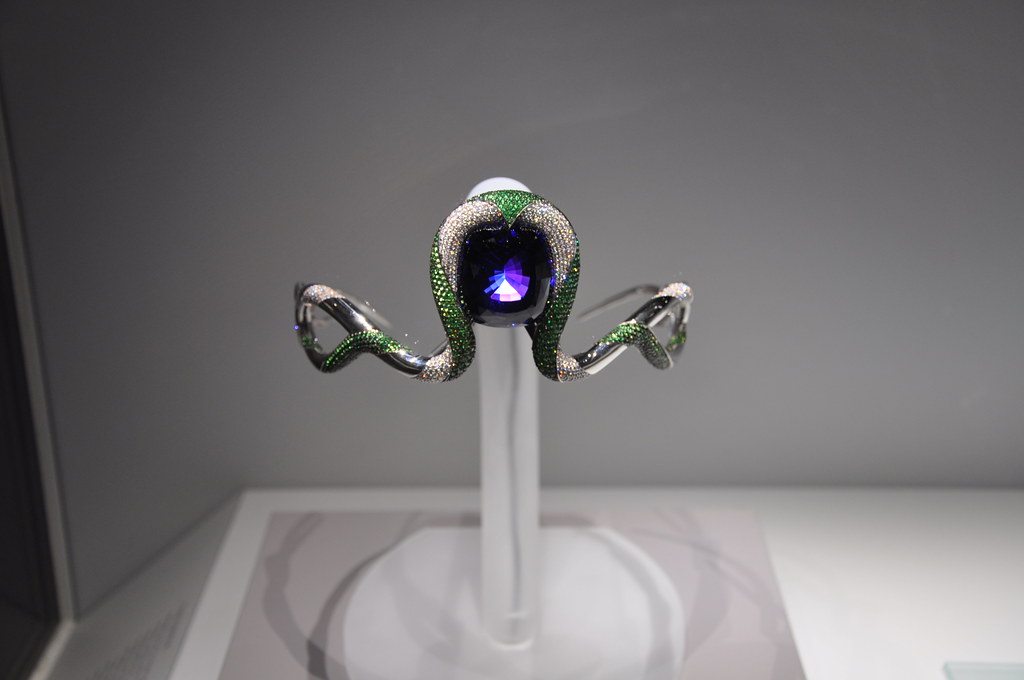
How To Care For Tanzanite Jewelry
Tanzanite jewelry is a beautiful and valuable investment. To ensure its longevity and keep it looking its best, proper care is essential. Firstly, always store your December Birthstone Jewelry in a soft pouch or a separate compartment to avoid scratching. Secondly, avoid exposing it to harsh chemicals, such as household cleaners or perfumes, as they can damage the gemstone. Lastly, it is recommended to clean your Tanzanite jewelry regularly with a soft cloth and mild soap to maintain its brilliance. By following these simple steps, you can enjoy your Tanzanite jewelry for years to come.
What Does Tanzanite Cost?
Tanzanite varies in cost depending on several factors. The most significant factors include the carat weight, color, clarity, and cut of the stone. On average, tanzanite prices range from $500 to $1,500 per carat for high-quality stones. You can find lesser quality stones for around $100 a carat as well. However, larger and more exceptional tanzanite gemstones can command prices of several thousand dollars per carat. It is important to note that prices can fluctuate due to market demand and availability. If you are considering purchasing tanzanite, it is advisable to consult with a reputable jeweler who can provide you with accurate pricing information based on the specific characteristics of the stone you desire. That said, December Birthstone Jewelry doesn’t have to be ultra expensive.
Let Us Create Your December Birthstone Jewelry
At Valeria Custom Jewelry, our name says what we do. And that is pretty much all we do. This means that we source each stone for each piece of December Birthstone Jewelry that we create. So, you will get to choose the tanzanite you want from all that are available at that point in time. At a retail chain jewelry store, you will be limited to the few stones they have on hand. And do we even need to mention the mark up at those places? Many times, custom December Birthstone Jewelry can cost less than something comparable at the chain stores. Especially if there is a tanzanite larger than a half carat.
You can view our portfolio of custom engagement rings or custom pendants to look for ideas. Or you can contact us with your own idea for December Birthstone Jewelry.
